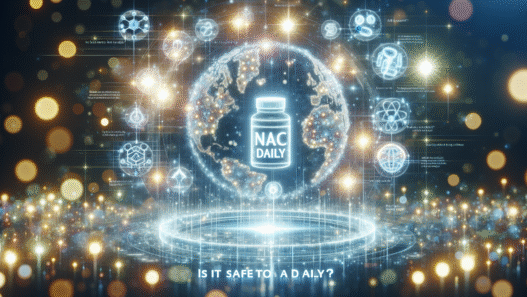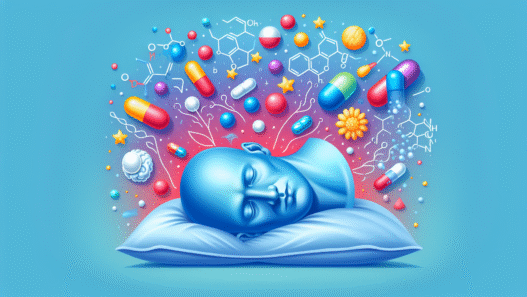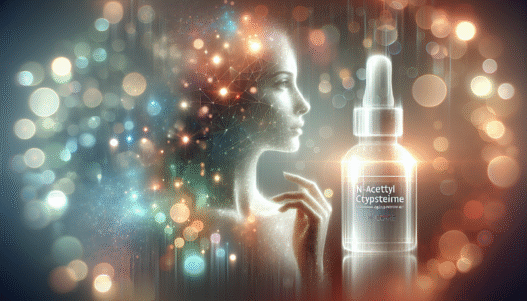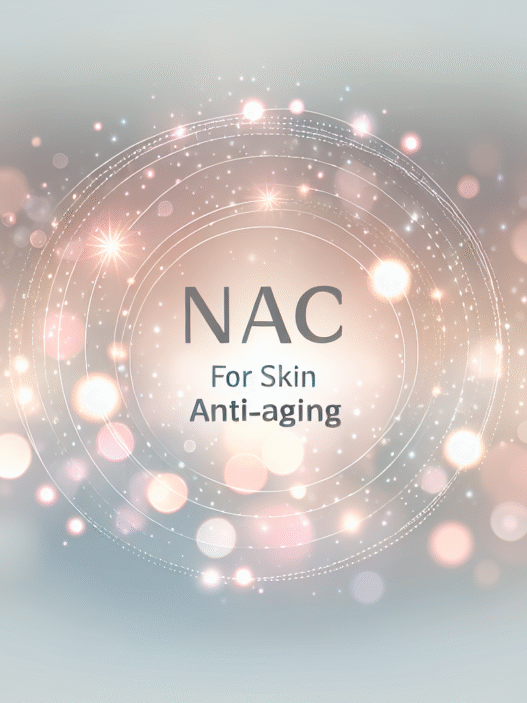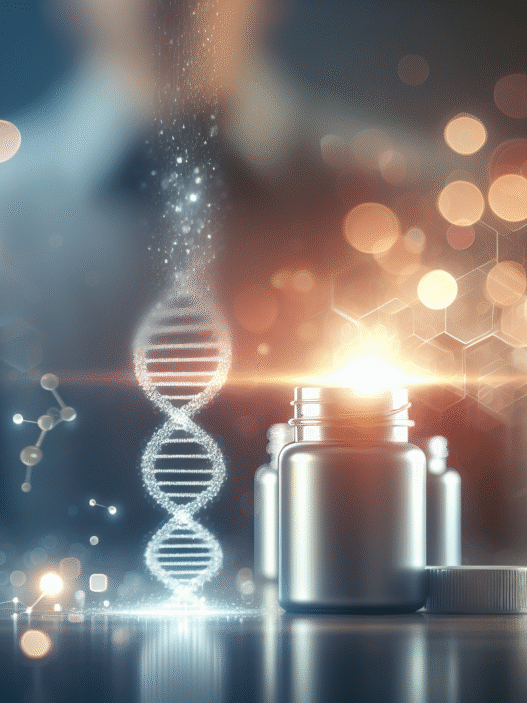Understanding N-Acetyl Cysteine (NAC)
N-Acetyl Cysteine (NAC) is a derivative of the amino acid cysteine and plays a crucial role in replenishing and maintaining glutathione levels in the body. This powerful antioxidant has gained attention for its numerous health benefits, particularly in the realm of anti-aging skin care.
Role in Glutathione Production
NAC acts as a donor of cysteine, which is essential for synthesizing glutathione, a potent antioxidant that protects cells from oxidative stress. It helps to maintain redox balance in cells, playing a key role in cellular health and longevity. Glutathione replenishment is particularly significant in conditions like HIV, where NAC aids in restoring glutathione levels (WebMD).
Understanding how NAC supports glutathione production underlines its importance in anti-aging strategies, particularly for individuals seeking to improve skin health. High levels of glutathione in the body can combat the signs of aging, such as wrinkles and skin elasticity loss.
Antioxidant and Anti-inflammatory Properties
NAC is widely recognized for its antioxidant and anti-inflammatory properties, making it an essential component in skin care (PubMed Central). By neutralizing free radicals, NAC helps to protect the skin from premature aging and damage caused by environmental factors.
As NAC can penetrate cell membranes, it inhibits inflammatory factors while facilitating epidermal proliferation, contributing to healthier skin rejuvenation (Mitochon). This capacity to reduce inflammation complements its antioxidant effects, positioning NAC as a potent candidate for inclusion in n-acetyl cysteine anti-aging skin care products designed to improve skin quality and combat the signs of aging.
In conclusion, NAC’s role in glutathione production and its robust antioxidant and anti-inflammatory properties illustrate its significance in anti-aging skin care routines. Understanding these aspects will aid individuals concerned about skin resilience and overall health in selecting appropriate supplements and products that incorporate NAC.
Health Benefits of NAC
N-Acetyl Cysteine (NAC) offers numerous health benefits that extend beyond its role in skin care. From cardiovascular health to respiratory conditions, NAC plays a vital role in promoting overall well-being.
Cardiovascular Health
NAC has been studied for its cardioprotective effects, especially in treating acute myocardial infarction (AMI). By enhancing glutathione production, NAC may help reduce oxidative stress, which is a significant contributor to heart disease. The antioxidant properties of NAC work by combating free radicals, thus reinforcing the heart’s health.
| Health Effect | Description |
|---|---|
| Reduces oxidative stress | Protects heart cells from free radical damage |
| Supports glutathione levels | Promotes overall cardiovascular health |
NAC’s potential to strengthen immune defenses may also contribute to better heart health by potentially decreasing the likelihood of infections that can strain the cardiovascular system (PubMed Central).
Respiratory Conditions
NAC has shown promise in improving lung function and reducing exacerbations in various respiratory conditions such as chronic obstructive pulmonary disease (COPD), cystic fibrosis (CF), and idiopathic pulmonary fibrosis. Its mucolytic properties help break down mucus, making it easier to expel from the lungs, thus improving breathing and overall lung function.
| Respiratory Condition | NAC Effect |
|---|---|
| Chronic Obstructive Pulmonary Disease (COPD) | Reduces exacerbations |
| Cystic Fibrosis (CF) | Improves lung function |
| Idiopathic Pulmonary Fibrosis | Reduces mucus build-up |
By supporting respiratory health, NAC can contribute to overall vitality and longevity, making it a valuable supplement for those concerned with long-term health.
Dermatological Effects
NAC may also have dermatological benefits. Research indicates that it can positively impact skin health, particularly in managing excoriation disorder, commonly known as skin-picking disorder (WebMD). Its antioxidant properties can reduce oxidative stress in skin cells, potentially leading to healthier and more resilient skin.
| Skin Benefit | Description |
|---|---|
| Manages skin-picking disorder | May reduce symptoms associated with compulsive skin-picking |
| Supports skin health | Promotes a healthier complexion through antioxidant effects |
For those seeking to enhance their skin health, the use of NAC is often discussed in the context of its n-acetyl cysteine anti-aging skin care applications. Its ability to improve skin conditions aligns with the broader health benefits it offers, making it a versatile supplement for individuals focused on longevity and wellness.
By understanding these health benefits, individuals can better appreciate the role of NAC in enhancing both internal health and external vitality. Consider incorporating NAC into a regimen that supports your overall wellness goals, possibly alongside other n-acetyl cysteine benefits.
NAC and Specific Medical Conditions
N-Acetyl Cysteine (NAC) has various applications in managing specific medical conditions, extending beyond its recognized role in anti-aging and skin care. Here are three notable conditions where NAC shows promising benefits:
Acetaminophen Overdose
NAC is well-established for its effectiveness in preventing acute liver failure due to acetaminophen overdose. Administering NAC within 8 hours of ingestion can restore glutathione levels, thereby preventing irreversible liver damage caused by toxic metabolites of acetaminophen. According to research, specific intravenous dosage protocols are critical for maximizing NAC’s protective effects.
| Administration Timing | Outcome |
|---|---|
| Within 8 hours | Restores glutathione levels |
| After 8 hours | Reduced efficacy in preventing damage |
Chronic Bronchitis
Studies demonstrate that NAC has significant benefits for individuals with chronic bronchitis and chronic obstructive lung disease (COPD). Patients treated with NAC exhibit fewer exacerbations compared to those on a placebo. A daily intake of 1200 mg is recommended as a preventative measure for people with documented airway obstruction, proving that NAC not only improves symptoms but also enhances overall quality of life for these patients.
| Condition | Recommended Dosage | Efficacy |
|---|---|---|
| Chronic Bronchitis | 1200 mg/day | Fewer exacerbations reported |
| COPD | 1200 mg/day | Improved lung function |
Obsessive-Compulsive Disorder
NAC has shown potential benefits in treating moderate-to-severe obsessive-compulsive disorder (OCD). When used as an adjunctive treatment alongside medications like fluoxetine or citalopram, NAC has demonstrated a significant reduction in compulsive symptoms among patients. These findings suggest NAC may enhance the ability to manage OCD effectively (PubMed Central).
| Treatment Approach | Outcome |
|---|---|
| NAC + Fluoxetine | Improved control of compulsions |
| NAC + Citalopram | Significant symptom reduction |
Overall, N-Acetyl Cysteine holds promise not only for anti-aging skin care but also as a valuable treatment option for various medical conditions, addressing liver health, respiratory issues, and mental health challenges. For more insights into its benefits, explore our section on n-acetyl cysteine benefits.
NAC in Skin Care
N-Acetyl Cysteine (NAC) has garnered attention in the skincare community for its promising anti-aging properties. Its unique biochemical makeup allows NAC to play a significant role in skin health improvement.
Anti-aging Benefits
NAC is essential for replenishing intracellular cysteine concentrations, which leads to increased levels of glutathione (GSH), a powerful antioxidant. This process is crucial for combating oxidative stress and inflammation—two key factors that contribute to the aging process of the skin (Indian Journal of Dermatology, Venereology and Leprology).
The anti-aging effects of NAC also stem from its ability to restore cellular function, maintain skin elasticity, and improve skin texture. Studies indicate that NAC can help mitigate the impacts of aging through improved GSH levels and reduction of inflammatory markers, making it a valuable component in any anti-aging regimen.
| Anti-Aging Benefits of NAC | Effects |
|---|---|
| Increases Glutathione Levels | Enhances antioxidant protection |
| Reduces Inflammation | Minimizes skin irritation and redness |
| Improves Skin Elasticity | Maintains youthful appearance |
| Addresses Oxidative Stress | Protects against free radical damage |
Skin Health Improvement
In addition to its anti-aging properties, NAC contributes to overall skin health. It supports the inhibition of inflammatory factors, which is particularly beneficial for individuals with chronic skin conditions such as acne or rosacea. As a result, NAC may lead to a clearer and healthier skin appearance.
Moreover, NAC has been linked with improvements in skin rejuvenation. By addressing signs of aging and supporting cellular repair mechanisms, NAC helps enhance skin vitality, making it a popular choice for those seeking comprehensive skin care solutions.
Key indicators of skin health improvement include increased moisture retention, reduced fine lines and wrinkles, and enhanced skin tone. By incorporating NAC into a skincare routine, one may experience considerable benefits in skin quality and appearance.
| Skin Health Improvements | Effects |
|---|---|
| Reduced Fine Lines and Wrinkles | Enhances overall skin texture |
| Improved Hydration | Maintains a plump and youthful complexion |
| Balanced Skin Tone | Reduces hyperpigmentation and unevenness |
In conclusion, the integration of N-Acetyl Cysteine into skin care regimens presents numerous advantages for anti-aging and overall skin health. For those interested in the n-acetyl cysteine anti-aging skin care benefits, it is advisable to consider both topical and supplemental forms of NAC to optimize results. More information on the specific applications and dosages can be found in articles about n-acetyl cysteine dosage and nac for skin rejuvenation.
NAC Dosage and Administration
Understanding the optimal dosing and how N-Acetyl Cysteine (NAC) is administered is critical for maximizing its benefits, especially in the context of n-acetyl cysteine anti-aging skin care.
Bioavailability and Absorption
The bioavailability of NAC is relatively low, with less than 10% absorbed when taken orally. This limited absorption occurs because NAC undergoes rapid metabolism by the liver. When administered intravenously, NAC demonstrates significantly higher efficacy, achieving a maximum plasma concentration (Cmax) of approximately 554 mg/L within 1-2 hours. The total clearance of NAC varies from 0.33 to 0.47 L/kg, with a half-life ranging from 5.58 to 6.25 hours.
| Administration Method | Cmax (mg/L) | Absorption Rate | Half-Life (hours) |
|---|---|---|---|
| Oral | NA | <10% | NA |
| Intravenous | 554 | High | 5.58 – 6.25 |
Safety and Tolerability
NAC is generally recognized as safe and well-tolerated when used orally or intravenously, even at higher doses. Adverse effects from NAC are rare and primarily mild, which can include nausea, vomiting, itching, and erythema. However, oral administration may lead to gastrointestinal symptoms—nausea and vomiting occur in up to 23% of patients. Similarly, while inhaled NAC is effective for treating respiratory diseases, it may cause side effects such as cough, sore throat, and in some rare cases, bacterial pneumonia or drug-induced pneumonitis.
| Common Adverse Effects | Incidence |
|---|---|
| Nausea | Up to 23% |
| Vomiting | Up to 23% |
| Itching | Rare |
| Erythema | Rare |
| Cough (inhaled NAC) | Rare |
Choosing the right method of administration and dosage for NAC is essential for optimizing its potential in promoting skin health and anti-aging effects, as well as ensuring safety and tolerability. For more information on recommended dosages, refer to our article on n-acetyl cysteine dosage.
Potential Side Effects of NAC
When considering the use of N-Acetyl Cysteine (NAC) particularly in the context of n-acetyl cysteine anti-aging skin care, it’s important to be aware of its potential side effects. These can vary depending on the method of administration, whether oral or intravenous.
Oral vs. Intravenous Administration
NAC can be administered orally or intravenously, with differences in bioavailability and effects. The oral bioavailability of NAC is low, with less than 10% absorbed after oral administration due to rapid metabolism by the liver. In contrast, when administered intravenously, NAC reaches a maximum plasma concentration (Cmax) of approximately 554 mg/L within 1-2 hours. The total clearance of NAC ranges from 0.33 to 0.47 L/kg, with a half-life of 5.58 to 6.25 hours.
| Administration Method | Bioavailability | Maximum Plasma Concentration (Cmax) | Half-Life |
|---|---|---|---|
| Oral | <10% | N/A | N/A |
| Intravenous | High | ~554 mg/L | 5.58 – 6.25 hours |
Common Adverse Effects
NAC is generally safe and well-tolerated, whether used orally or intravenously. Adverse effects are rare and mostly mild. Common side effects may include:
- Nausea
- Vomiting
- Itching
- Erythema
These mild effects are typically manageable. Individuals considering NAC for its potential benefits, such as skin rejuvenation or nac for longevity, should consult with healthcare professionals to ensure proper usage and monitoring for any potential side effects. For further understanding of the benefits, one can explore n-acetyl cysteine benefits and n-aetyl cysteine skin rejuvenation benefits.





